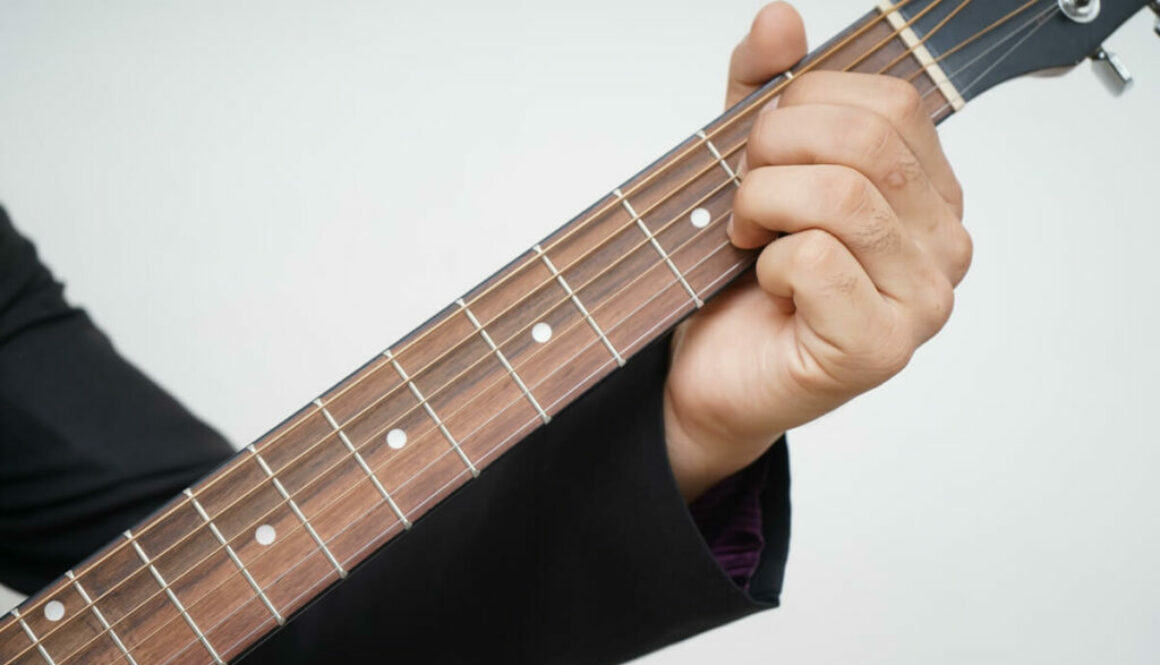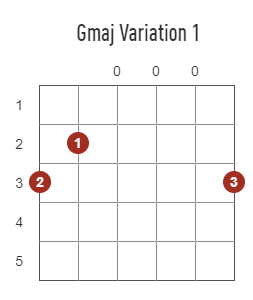Understanding Open Chords

“Open Chords” is a term you’ll likely encounter very often in the early stages of learning to play the guitar. The main reason it is so common at this stage is that chords are usually one of the first things an aspiring guitarist will learn, and within ‘chords’ as a category, ‘open chords’ are usually the first kind of chords you’ll study.
It’s really important to understand what an open chord is, where it gets its name, how to use it, and how it’ll feed into other types of chords you’ll learn later on. So, let’s get started.
What is a chord?
Before we get to ‘open chords’, let’s just clarify what a ‘chord’ is. A chord is simply the sound formed when two or more notes are played at the same time. Think about playing a single note – an open string on the guitar perhaps, or a single key on a piano – this is not a chord, this just a note. A chord is two or more (very often three or more) notes played at the same time. Depending on the kind of chord and the notes chosen, this may well be harmonious or dissonant or downright weird, but that doesn’t change the definition! Multiple notes at once = A chord!
What is an open chord?
There are a few different ways to play chords on a guitar. In different parts of the fretboard, with different fingerings, and so on. But the primary, simplest, most common kind of chord is the open chord. To understand why they’re called open chords, the first step is to understand the term ‘open string’. What this means is when a string is played (i.e. Plucked with fingers or a pick) without your fretting hand pressing down anywhere along the string, on any fret. The string is free to ring out, or ‘open’.
So, an ‘open chord’ is a chord in which at least one (though very often more) of the strings is left open. The player’s hand is not clamped across all the strings, in a ‘closed’ position. They will be fretting some notes, of course, but the chord will comprise a combination of fretted notes and open strings. If it has no open strings – it’s simply not an open chord. G major chord (variation 1) is a good example of an open chord, with three notes open and three notes fretted. Take a look at the other four variations on the same page – you’ll notice they do not contain any open strings and are therefore not ‘open chords’

What are Open Chords used for?
The quick answer is – to strum pop/rock/folk songs on an acoustic guitar. The main guitar part in so many genres of contemporary music is an acoustic guitar strumming a chord pattern comprising either entirely, or mostly, open chords. Even when you might encounter songs using a capo – you’ll notice that usually this is only to enact a change of position, and that the chord shapes themselves that you’ll fret just in front of the capo are of your familiar open chords.
What other kinds of chords are there?
The next kind of chord you’re likely to encounter is a ‘barre chord’, meaning when one finger lies flat across the entire neck along one fret as part of the chord shape. However, it’s really important you ensure you’ve fully got to grips with open chords before taking these on. For many reasons around practice and finger strength, and open chords being so important to start with. But most of all – you’ll later discover that barre chords are directly based on open chords. That is to say, they’re like an extension of the idea of open chords, and feature many of the same shapes. So get your open chords done!
Alex Bruce is a writer for Guitar Tricks and 30 Day Singer
